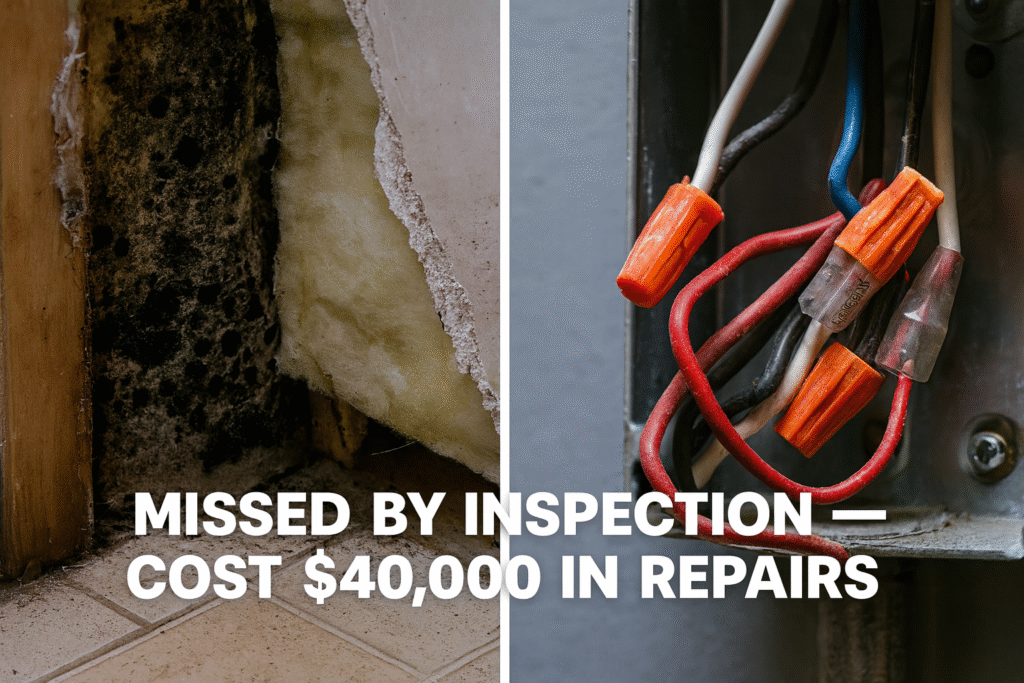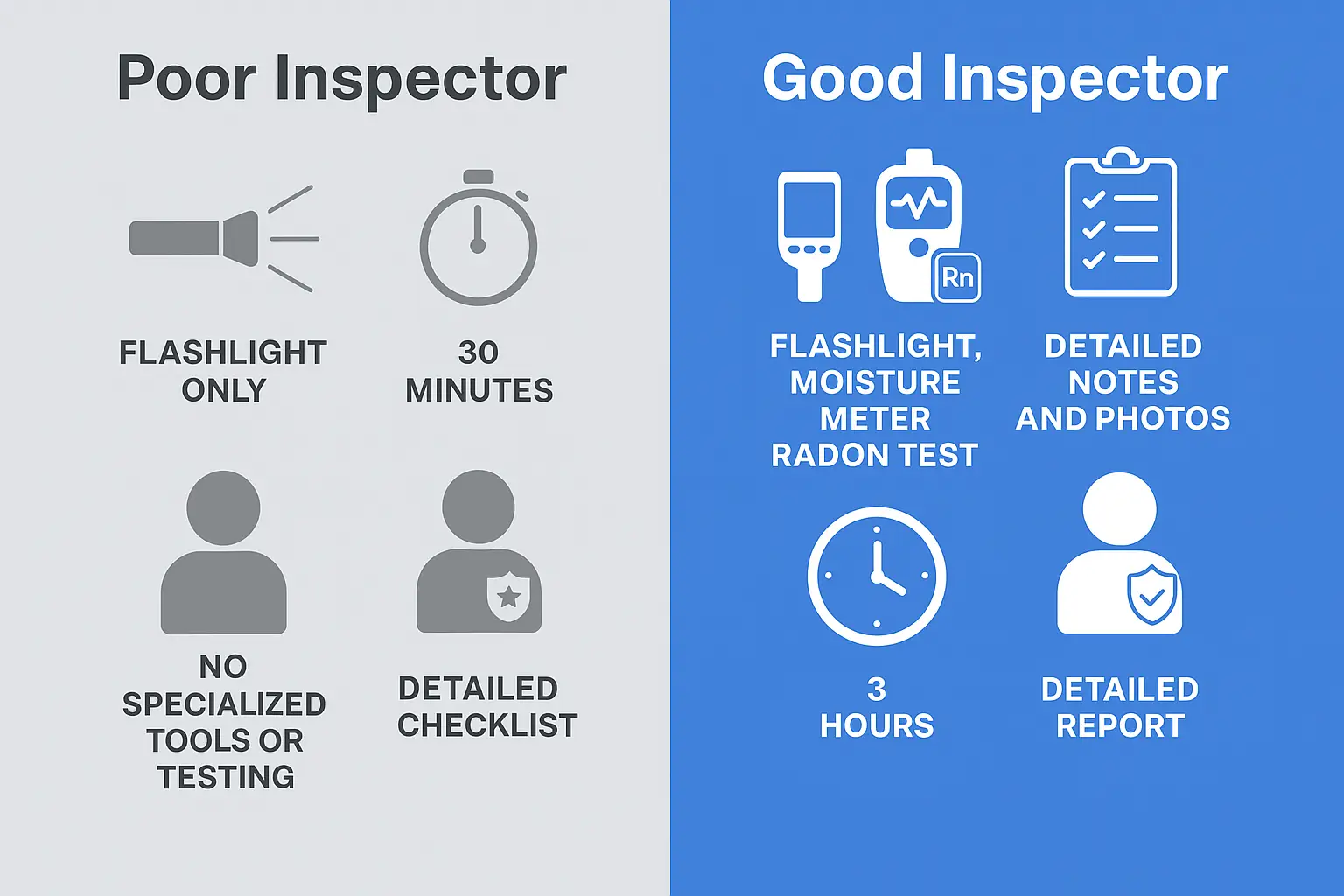Buying or owning a home should be exciting — not a nightmare waiting to unfold. But sometimes inspections miss the mark. In one case shared by contractor Mike Holmes from Make It Right, first-time buyers Keith and Caitlin thought they were safe after their inspector gave them a clean report. Months later, they discovered their roof was rotted, had multiple layers of shingles, an unfinished addition with no shingles, no roof vents, and even cut floor joists. The rushed inspection — wrapped up in just an hour — failed to catch these major issues, leaving the couple with structural problems and expensive repairs.
Your house is the single biggest purchase you’ll likely make. If the inspection goes wrong, it can cost tens of thousands later. The good news? You can learn what commonly gets missed — and how to protect yourself.
Why Home Inspections Fail Homeowners
Not all inspectors are created equal. Some rush through their work, some lack training, and others don’t use the tools needed to uncover hidden issues. When that happens, serious problems like mold and moisture, structural cracks, or unsafe wiring can slip by unnoticed — leaving homeowners with expensive repairs and safety hazards.
Take the case of Keith and Caitlin, featured by contractor Mike Holmes from Make It Right. Their home inspector wrapped up in about an hour instead of the 2–3 hours a thorough inspection requires. As a result, he missed critical problems:
- Rotten roof sheathing and multiple layers of shingles adding dangerous weight
- An unfinished addition roof covered only in underlayment — no shingles at all
- No roof venting, which can cause moisture buildup and premature shingle failure
- Cut floor joists, a major structural hazard
The inspector even contradicted himself, noting that he couldn’t walk the roof due to pitch — though the buyers saw him up there. This lack of consistency, detail, and thoroughness left Keith and Caitlin with repairs that should have been flagged before they signed the deal.
Common Home Inspection Fails You Can Avoid

Here are some of the big misses that come back to haunt homeowners:
- Electrical hazards – Outdated wiring or overloaded panels are one of the top fire risks.
- Foundation cracks – Even small cracks can signal structural movement.
- Moisture and mold – Attics, basements, and crawl spaces often hide leaks.
- Furnace and HVAC issues – A noisy furnace or clogged ductwork can cost thousands if missed.
- Poor exterior caulking – Gaps around windows and siding invite water damage.
When inspectors skip over these areas, homeowners end up with repair bills and long-term risks to health and safety.
DIY Red Flags You Can Spot Yourself
While you’ll still want a professional inspection, there are red flags you can catch early:
- Lights that flicker or outlets that don’t work
- Toilets or faucets that wobble when touched
- Stairs or guardrails that feel loose
- Cracks running across walls or foundations
- Musty smells in basements or bathrooms
- Windows that leak or stick shut
Think of these as the “quick checks” you can do before buying a home or as part of your seasonal maintenance routine.
👉 Want a full guide you can take with you? Download the AHA DIY Homebuyer Inspection Checklist for a step-by-step walkthrough of what to look for before you buy.
What a Good Inspector Should Do

A proper inspection goes beyond a flashlight and a clipboard. A good inspector will:
- Use tools like moisture meters, radon testers, and thermal cameras
- Check the attic, insulation, and ductwork
- Test the furnace, air conditioning, and water heater
- Look for hidden water leaks, mold, or ventilation issues
How to Make Sure You’re Hiring a Pro
Not all inspectors meet the same standards, so here’s what to ask before hiring:
- Are you certified? Look for membership in ASHI (American Society of Home Inspectors) or InterNACHI (International Association of Certified Home Inspectors).
- Can I see a sample report? A pro provides detailed notes with photos, not just a checklist.
- Do you carry errors & omissions insurance? This protects you if they miss something major.
- How long will the inspection take? A thorough inspection usually runs 2–4 hours. If someone promises to be done in 30 minutes, that’s a red flag.
Helpful Resources for Finding Inspectors
- InterNACHI Certified Inspector Directory
- ASHI Inspector Directory
- AHA Contractor Finder (Coming Soon) – connect with vetted local pros who meet AHA’s standards
Smart Next Steps for Homeowners
- Buying a home? Insist on a full inspection and don’t hesitate to hire specialists if something seems off.
- Already own? Use the DIY checklist above once or twice a year, especially before winter and after major storms. Then bring in pros when needed.
- Save smarter: Tools like the AHA Contractor Finder (Coming Soon) can connect you with vetted professionals, while AHA SmartSaver (Coming Soon) helps lower repair and maintenance costs.
Conclusion
Home inspection fails can cost families thousands and put their safety at risk. But by learning what inspectors often miss — and by knowing what to look for yourself — you can avoid turning your dream home into a money pit. Do the checks, hire the right inspector, and lean on AHA’s resources to keep your home safe and sound.

